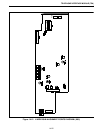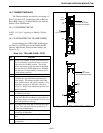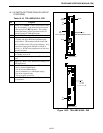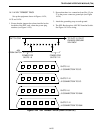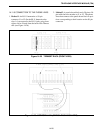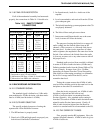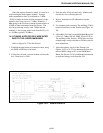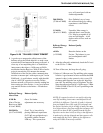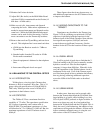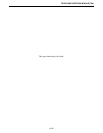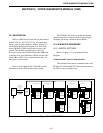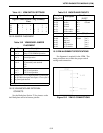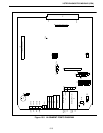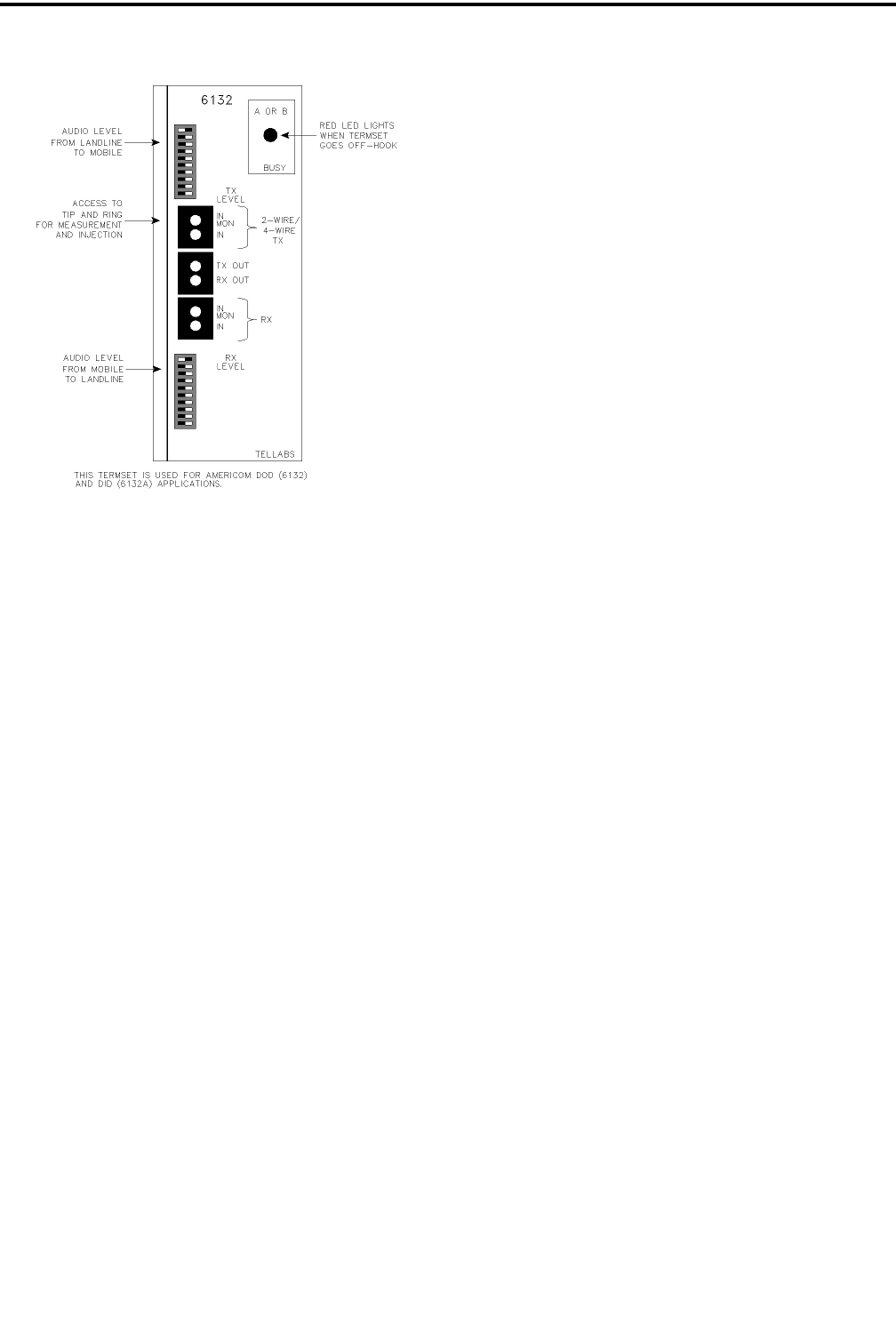
TELEPHONE INTERFACE MODULE (TIM)
14-29
Figure 14-28 TELLABS 6132A/B TERMSET
8. A good way to measure the effectiveness of the
balance across the Tellabs hybrid is to send a tone
towards the CO and measure the energy reflected. A
clear way of accomplishing this is to establish an
interconnect, then inject a 1 kHz tone at ±2 kHz
modulation into the Receiver. With ±2 kHz of audio
going in towards the CO, measure the amount
reflected out of the Exciter with a communication
monitor or measure pin 1 with respect to pin 7 on the
E&M card. A good balance, usually with the addi-
tion of a 0.033 µF capacitor across the Tellabs
balance network, will result in virtually nothing but
data coming out of the Exciter. A very poor balance
can send the Exciter to the limiter. A breakdown
follows:
Reflected Energy Balance Quality
Above Data
0-200 Hz Great. No further
(Out of Exciter adjustments are necessary.
Receive on E&M
0-16 mV RMS)
200-500 Hz Good. Try to lower this by
(16-37 mV RMS) placing additional capacitance
(0.033 µF, non-polarized caps)
in parallel with the Termset
LSB cap. This system, how-
ever, will sound good with no
further adjustments.
500-1500 Hz Poor. Definitely try to lower
(37-86 mV RMS) this reflected energy by adding
capacitance to the balance
circuit.
1.5-4 kHz Unusable. More energy is
(86 mV-1V RMS) reflected than is sent into the
CO. May be acceptable if all
users are half-duplex. A full
duplex radio will not work on
this system.
Reflected Energy Balance Quality
Above Data
>4 kHz Reset the limiter on the
(>1V RMS) Exciter. The balance is poor
and a maladjusted audio
limiter.
9. After the reflected is minimized, check the Tx level
to the CO for -7 dBm.
10.Turn off the tone, but keep the call going.
11.Inject a 1 kHz tone onto Tip and Ring at the remote
location. A good remote location would be the SMR
operator's shop (vs the operator's site), or any CO
exchange other than the one at the site. Inject the
tone into Tip and Ring using a Telephone Test Set.
Setup the remote location for a 1 kHz tone at -7 dBm
(346 mV RMS, 978 mV P-P) on Tip and Ring at the
remote location.
NOTE: If a remote location is not used for injecting
onto Tip and Ring, interconnect and dispatch levels
will likely be different. Typically, if audio is injected
from a telephone line of the same CO exchange and
the Exciter deviation set for ±2 kHz of audio, the same
level injected into a line from a different exchange will
result in less than ±2 kHz of audio from the Exciter.
Injection can be done locally as long as the difference
is made up by placing dispatch and interconnect calls
and comparing the levels. Make up for differences
using the Tellabs Termset dip switches.




